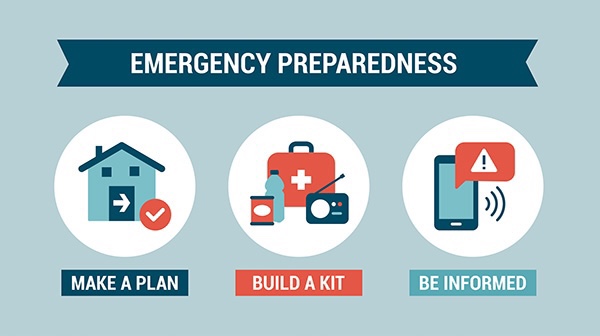Being prepared for emergencies is crucial to safeguard your home and protect your loved ones. In this blog post, we’ll explore essential steps for emergency preparedness that will help you minimize risks and respond effectively during unexpected events. From conducting a home safety assessment and creating an emergency kit to developing an evacuation plan and staying informed, these guidelines will empower you to protect your home and ensure the safety of your family.

1. “Conduct a Home Safety Assessment: Identify Potential Hazards”
Start by conducting a thorough assessment of your home to identify potential hazards. Check for faulty electrical wiring, gas leaks, and other potential dangers. Secure heavy furniture and appliances to prevent them from tipping over during earthquakes or strong winds. Install smoke detectors on each floor of your home and test them regularly. By identifying and addressing potential hazards, you reduce the risk of accidents and enhance overall home safety.
2. “Create an Emergency Kit: Essential Supplies at Your Fingertips”
Assemble an emergency kit that contains essential supplies to sustain you and your family during emergencies. Include non-perishable food, water, a first aid kit, flashlights, batteries, a battery-powered radio, a multi-tool, extra clothing, blankets, personal hygiene items, cash, and important documents. Customize the kit based on the specific needs of your family and consider any unique requirements, such as medications or baby supplies. Store the kit in a readily accessible location.
3. “Develop an Evacuation Plan: Establish Clear Protocols”
Create a comprehensive evacuation plan that outlines clear protocols for different emergency scenarios. Identify primary and alternative evacuation routes, establish designated meeting points, and assign responsibilities to each family member. Practice evacuation drills regularly to ensure everyone is familiar with the plan and knows what to do in an emergency. Review and update the plan as necessary to accommodate any changes in circumstances or family dynamics.
4. “Secure Your Home: Fortify Against Potential Threats”
Take measures to fortify your home against potential threats. Install sturdy doors and windows with reliable locks. Consider reinforcing entry points and installing security systems or alarms. Trim trees and bushes near your home to minimize fire risks. Install smoke and carbon monoxide detectors, and ensure they are in working order. By fortifying your home, you enhance its resilience and decrease vulnerability to potential dangers.
5. “Stay Informed: Receive Timely Updates and Alerts”
Stay informed about potential emergencies and receive timely updates through various channels. Sign up for local emergency alerts and notifications to receive important information. Follow reliable news sources and official social media accounts for updates. Keep a battery-powered or hand-cranked radio to access news in case of power outages. Being informed allows you to make informed decisions and take appropriate actions to protect your home and family.
6. “Practice Fire Safety: Minimize Fire Risks”
Implement fire safety measures to minimize the risk of fires in your home. Install smoke detectors in key areas and test them regularly. Keep fire extinguishers on each floor and learn how to use them correctly. Create a fire escape plan with multiple routes and practice it with your family. Avoid overloading electrical outlets and ensure proper maintenance of electrical appliances. By practicing fire safety, you reduce the likelihood of fire-related emergencies.
7. “Maintain Insurance Coverage: Protect Your Home and Belongings”
Ensure that you have adequate insurance coverage to protect your home and belongings. Review your policies regularly and update them as necessary. Understand the terms and conditions of your coverage, including any exclusions or limitations. Keep an inventory of your possessions, including photos or videos, and store it in a safe place. Maintaining insurance coverage provides financial protection and peace of mind in the event of unforeseen disasters.
Conclusion
Emergency preparedness is essential for safeguarding your home and ensuring the safety of your loved ones. By conducting a home safety assessment, creating an emergency kit, developing an evacuation plan, securing your home, staying informed, practicing fire safety, and maintaining insurance coverage, you enhance your readiness and resilience. Take proactive steps today to protect your home and provide a secure environment for your family.
As an Amazon Associate we earn from qualifying purchases through some links in our articles.



